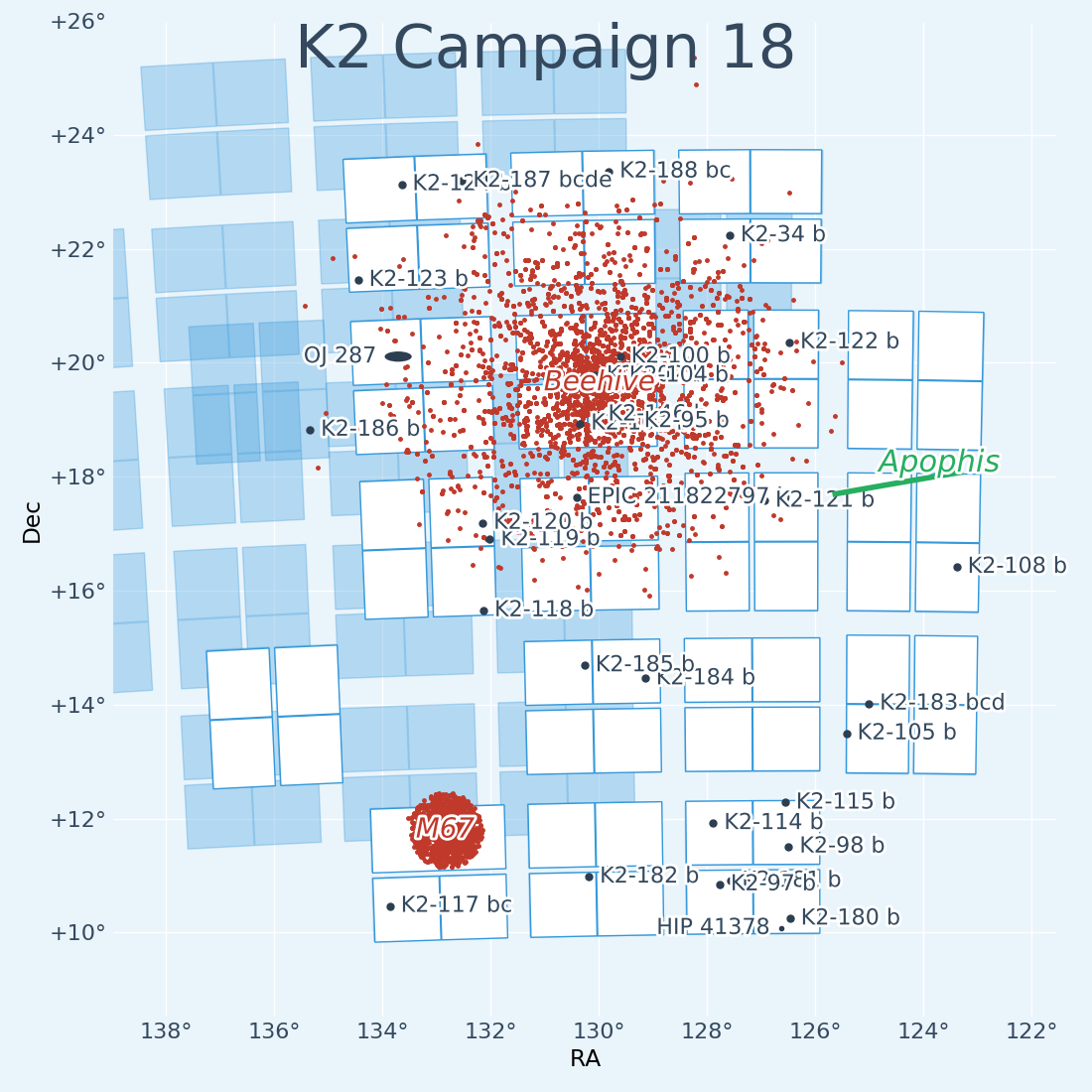The science program and target lists for K2 Campaign 18 have now been posted on the approved targets & programs page.
The Campaign 18 target list includes 20,929 standard long cadence and 234 standard short cadence targets located towards the constellation of Cancer.
The field is almost identical to that observed during Campaign 5 and overlaps substantially with Campaign 16. The third visit to this key part of the sky that contains the M44 and M67 star clusters will enable users to study benchmark targets with a 3-year baseline and 8-month duty cycle, enabling original Kepler-like science at a Galactic sightline that is located 130 degrees away from the original Kepler field in Cygnus.
Notable targets include:
-
Two open star clusters:
- M44 is one of the most nearby open star clusters and is known to contain at least six confirmed planets (K2-95b, K2-100b, K2-101b, K2-102b, K2-103b, K2-104b). Its members are being observed using standard masks.
- M67 is the benchmark star cluster with solar-like age and metallicity. Hundreds of stars in the cluster core are being observed using 121 unique 40x40-pixel long cadence aperture masks which create a contiguous 440x440 pixel region. In addition, hundreds of members in the outskirts are being observed using standard masks, and more than 40 targets are being observed using short cadence masks.
- 42 confirmed exoplanets from Campaign 5: K2-34b, 95b, 97b, 98b, 100b, 101b, 102b, 103b, 104b, 105b, 108b, 114b, 115b, 117bc, 118b, 119b, 120b, 121b, 122b, 123b, 124b, 146b, 180b, 181b, 182b, 183bcd, 184b, 185b, 187bcde, 188bc, and HIP 41378 bcdef. Most noteworthy, the HIP 41378 system is a bright F-type dwarf (V=9) shown by Campaign 5 to host at least five planets. The majority of these confirmed planet systems are being observed in short cadence.
- Dozens of unconfirmed planet candidates from Campaign 5 are being re-observed, the majority in long cadence.
- 60 low-mass flare stars and 59 variable white dwarfs are being observed in short cadence.
- 13 very bright stars are being observed using custom circular masks, including ζ Cancri and 25 Cancri in short cadence, and η, γ, X, 21, 29, 49, 50, and 60 Cancri in long cadence.
- OJ 287 is a well-studied bright galaxy (V=15) which is thought to show lightcurve variations due to a binary supermassive black hole at its center. It is being observed in short cadence.
- 37 Solar System objects including 22 comets and trojan Asteroids, 9 faint Trans-Neptunian Objects, and the potentially hazardous asteroid 99942 Apophis are being observed in long cadence.
The figure below illustrates the location of the field and its notable targets.
